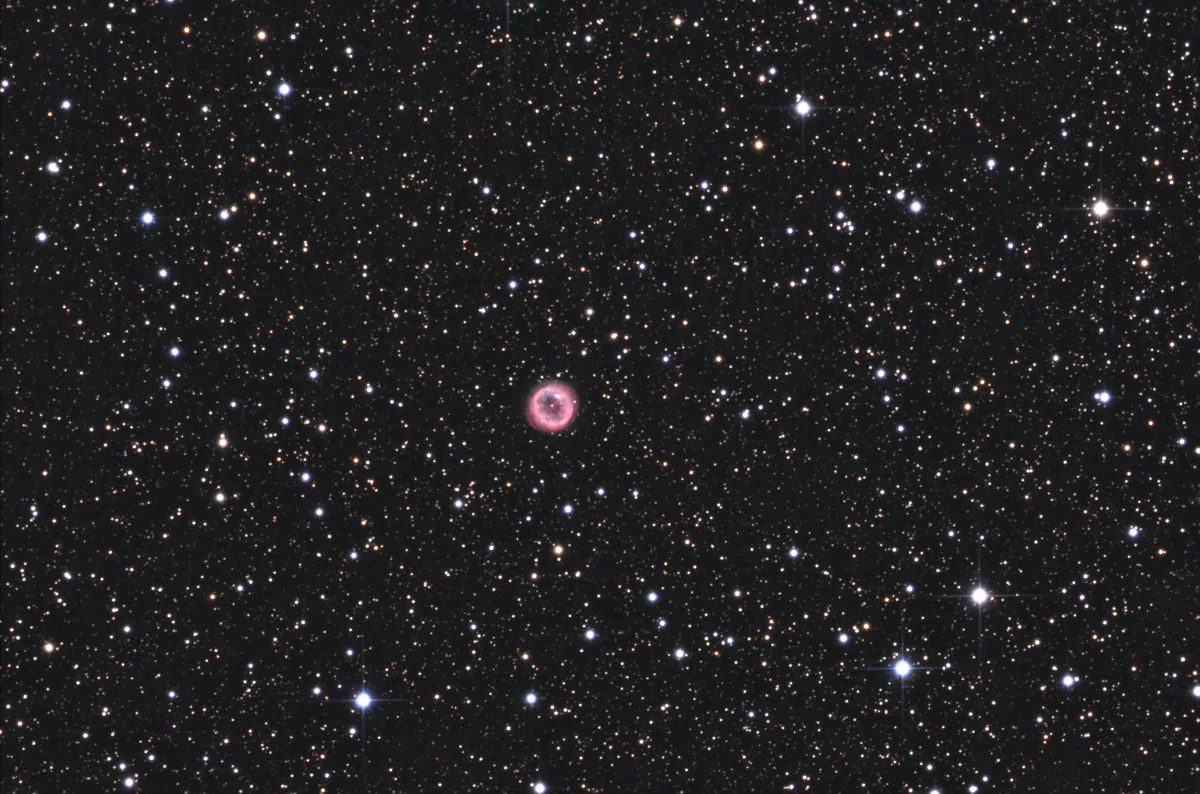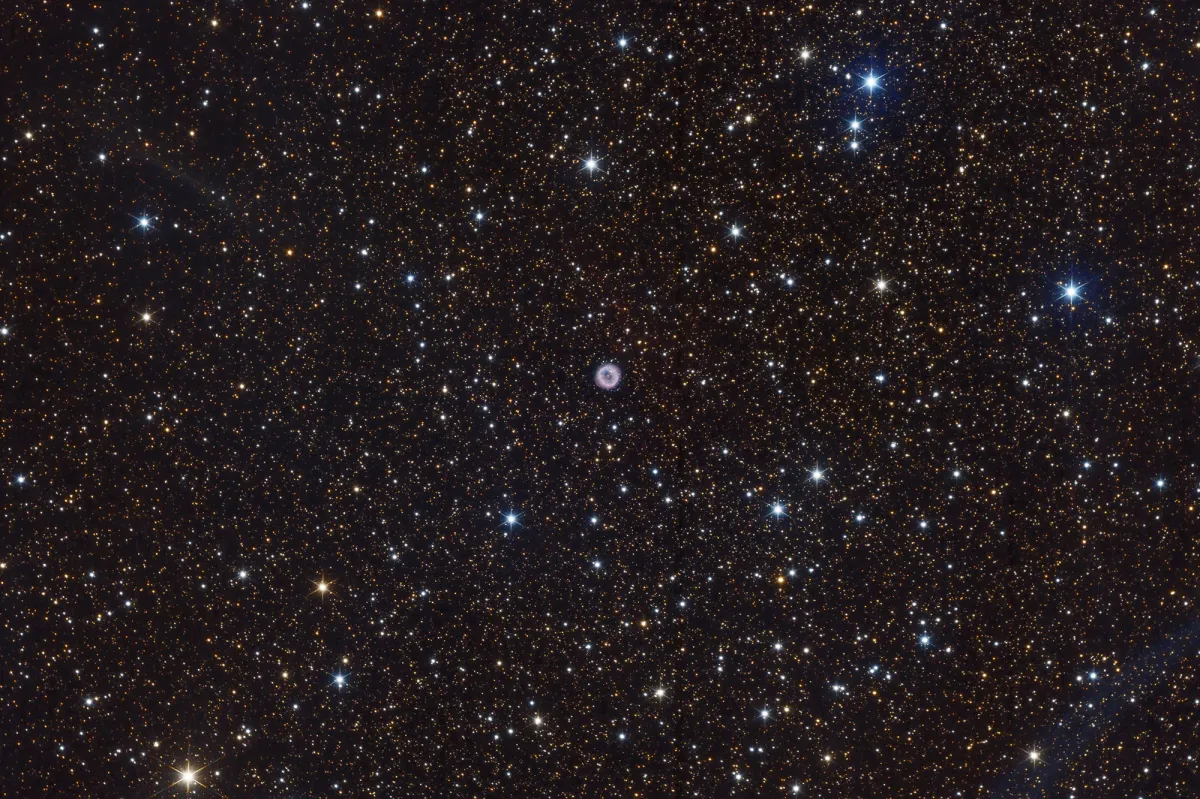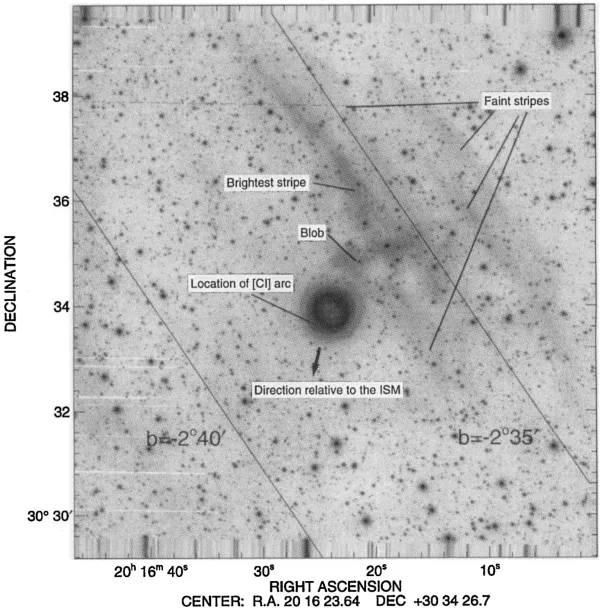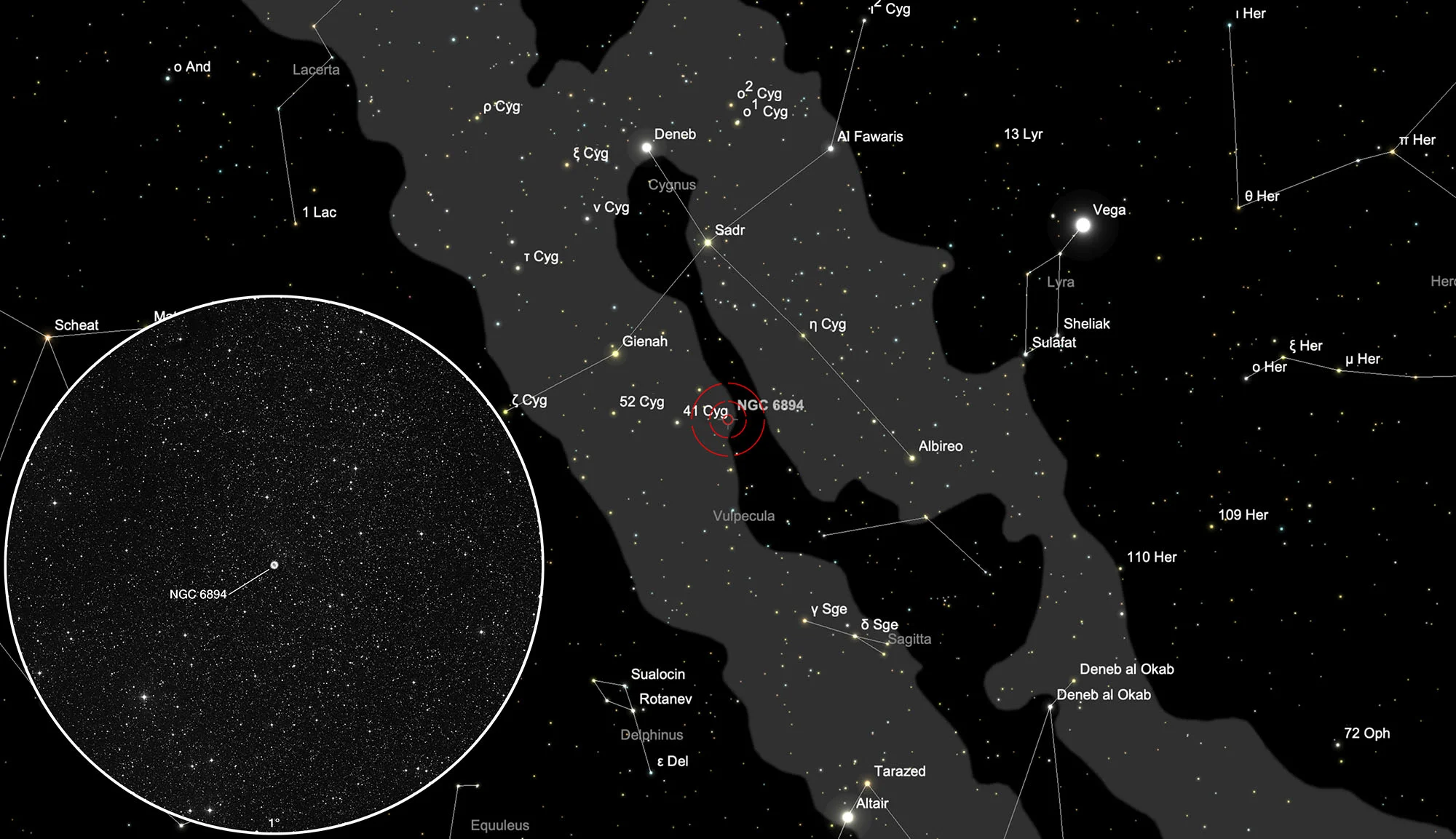Planetary Nebula NGC 6894


Object Description
The planetary nebula NGC 6894 was discovered by William Herschel on 17th July 1784. With an angular diameter of around 40 arc minutes, it appears about as large as Jupiter, but is much fainter: around 14 magnitudes. The distance is about 1669 pc (about 5400 light years). [196]

At first glance, NGC 6894 looks like what appears to be a typical planetary nebula, with a diffuse, spherical outer shell and a tortuous inner structure. The pink colour of this nebula could be due to the reddening of the light by intervening clouds of gas and dust in our line of sight. However, this planetary nebula holds a unique surprise, which only becomes apparent on images taken with a particularly long exposure time (deep field): Northwest of the nebula there are faint gas stripes, which are ionized by the central star of NGC 6894 and shine in Hα light. Presumably this gas comes from the halo of the planetary nebula, which hit the interstellar medium. Notably, these streaks of glowing gas are parallel to the galactic plane. It is believed that they aligned along the galactic magnetic field. [321]
| Designations | PN G069.4-02.6: NGC 6894, PK 69-02.1, ARO 110, HE 2- 460, VV 254, VV' 530 |
| Right Ascension (J2000.0) | 20h 16m 24s |
| Declination (J2000.0) | +30° 33' 54" |
| Dimensions | 40." (optical), 55." (radio) |
| Distance | 1.5 - 1.9 kpc |
| Radial Velocity | -58.0 ± 6.0 km/s |
| Expansion Velocity | 43.0 (O-III) km/s |
| C-Star Designations | AG82 404, CSI +30 -20144 2, GCRV 12649, VES 128 |
| C-Star Magnitude | B: 18.1 |
| Discoverer | HERSCHEL 1823 |
Finder Chart
The planetary nebula NGC 6894 is located in the constellation Cygnus. On 25 July it is in opposition to the Sun and crosses the meridian at local midnight. The months of March to December are the best observation times.
Visual Observation
400 mm Aperture: In the 21 mm Ethos eyepiece (85x) the planetary nebula is well visible as a ringlet. At higher magnification (11 mm Delite, 163x) the ring structure is more clearly visible. An O-III hardly brings out more details. — 400 mm f/4.5 Taurus Dobsonian, Glaubenberg, 2. 8. 2022, SQM 21.21, Bernd Nies
